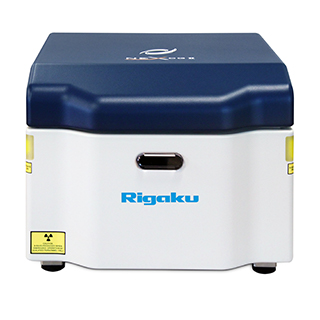Research & Development
EDXRF / XRF Elemental Analysis for Demanding R&D Applications
Qualitative and Quantitative Element Analysis in Solids, Liquids, and Films — from PPM-levels to 100 wt%
Governments and industry collectively invest billions of dollars every year into researching and developing new and advanced materials. This work involves studying the characteristics and uses of various substances, such as metals, ceramics, and plastics, employed in applications ranging from aerospace and defense technology to consumer products. Energy dispersive X-ray fluorescence (EDXRF) is a primary non-destructive technique for studying such materials, with applications ranging from solids and alloys to liquids, powders, and thin films.
NEX CG II Series benchtop spectrometers are powered by Rigaku’s RPF-SQX Fundamental Parameters (FP) software, featuring Rigaku Profile Fitting (RPF) technology and Scattering FP. This robust software allows semi-quantitative analysis of almost all sample types without standards – and rigorous quantitative analysis with standards. Rigaku’s Scattering FP method automatically estimates the concentration of unmeasurable low atomic number elements (hydrogen to fluorine) and provides appropriate corrections.
Calibration standards can be expensive and difficult to obtain for many applications. With RPF-SQX, the number of required standards are greatly reduced, significantly lowering the cost of ownership and reducing workload requirements for running routine analyses.

R&D Information & Resources
- American Chemical Society – ChemCenter
- AIRTO – Assoc. for Innovation, Research and Technology Organisations
- Chemistry World
- Chemistry & Engineering News (C&EN)
- U.S. National Chemistry Olympiad
- Martindale’s Calculators
- National Institute of Standards and Technology (NIST)
- NIST Physical Reference Data
- Physics Today
- R&D World
- The Research & Devolopment Society
- USPTO Patent Search
- Wired Chemist
- Wikipedia: R&D
- Wikipedia: Research

